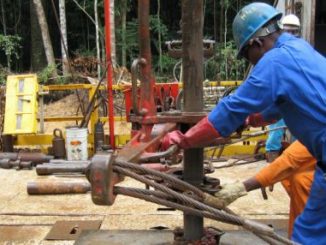Data obtained from the United States Energy Information Administration (EIA) has put the continued decline of employment in the oil and natural gas production across the world at 26 percent between 2014 and 2016.
The report, which captured between October 2014 and May 2016, stated that employment in oil and gas production reached a hight of 538,000 jobs in October 2014, but since then had declined by 26 percent, a loss of more than 142,000 jobs.
It will be recalled that in Nigeria, there had been alarming rate of job cuts in the petroleum sector over the downturn in crude oil price at the International market and the attacks on oil facilities in the Niger Delta region. As a result, the operations and earnings of oil companies dropped sharply, as recent report by the Nigeria National Petroleum Corporation, NNPC, puts the country’s daily crude production losses at 500,000 barrels per day, with production averaging 1.4 million barrels per day, mb/d as against the 1.9mb/d recorded earlier in July.
According to the EIA jobs data report, the total decrease in jobs is nearly three times the 51,000 jobs lost over a 13-month period during the 2008–09 recession. The report hinted that not all production jobs that are directly related to drilling, saying “the majority of the jobs are actually for extraction or support activities, which include the operations of drilled wells, exploration, excavation, well surveying, casing work, and construction.
This also includes the maintenance of already producing wells.” The report further explained that “the effects of the reduction in drilling and employment in the industry have been relatively modest, with production levels in May down by 6 per cent and 1 per cent respectively. This is relative to their level in May 2015. “Compared to October 2014, the peak month for employment in the sector, May 2016 crude oil production was two per cent lower, while natural gas production was flat.”
However, the report noted that “divergence between trends in rig counts and employment on the one hand and oil and the trends of natural gas production on the other are attributable to increases in production per new well in key regions, driven in part by advances in siting and drilling technology.”For instance, new-well oil production per rig so far in 2016 has been more than twice its 2013 level in areas such as the Bakken, Eagle Ford, and Permian.
Growing offshore crude oil production in the Gulf of Mexico has also helped to offset declines in Lower 48 onshore production,” the report added.
Copyright Ships & Ports Ltd. Permission to use quotations from this article is granted subject to appropriate credit given to www.shipsandports.com.ng as the source.

